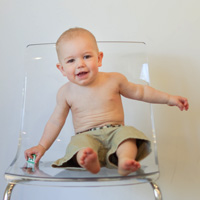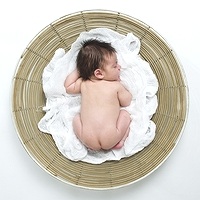What Is Baby Acne?

What to do about adult acne and pimples during pregnancy
New moms can suffer from breakouts too. In fact, about 25 to 35 percent of people, especially women, have acne throughout adulthood. “I see a lot of women who feel pretty hard done by because they thought acne was a teen affliction,” says Dr. Shannon Humphrey, clinical intstructor, department of dermatology and skin science at UBC. Nodules in adult skin tend to be deeper than teen acne and often form on the chin, jaw and neck. Caused by hormone fluctuations, pimples usually appear before, during or after menstruation. Pregnancy can also play a role: Some women find their skin clears, while others who had perfect complexions before will suddenly see spots. “Because hormones shift over time, some women may have acne flare-ups all the way to menopause,” says Humphrey.
Although there isn’t much you can do on the preventative side (for instance, it’s a myth that eating chocolate or greasy food can trigger a breakout), there is evidence that some acne flare-ups could be diet-related. Dairy products and high-glycemic diets (i.e. heavy on the carbs) can cause blemishes in some people, says Weinstein, although it’s relatively rare.
The good news is, there are many treatments available for acne-prone adults. In addition to topical creams, oral medications can help control hormones and reduce flare-ups, says Humphrey. They’re only available in tablet form, but scientists are working on creams to regulate hormones topically. Unfortunately, hormone regulation isn’t an option for pregnant women, who should also avoid retinoids, oral antibiotics (such as Tetracycline) and Accutane (which can cause birth defects). But that doesn’t mean moms-to-be have to put up with pimples. “Topical antibiotics are generally safe for short-term use during pregnancy,” Humphrey says. “I also sometimes use glycolic acid solution because it can improve acne and soften the skin.”
For those looking for less invasive treatments, lasers and light have shown some benefits. “There’s no conclusive evidence that they’re safer or more effective than conventional treatments, but they may be a good complementary option,” says Humphrey. (Lasers decrease oil production while light therapy targets bacteria.) As an added bonus, these treatments may also help reduce acne scarring.
Meet Our Experts:
1. Dr. Loretta Fiorillo, paediatric dermatologist and professor at University of Calgary
2. Dr. Miriam Weinstein, paediatric dermatologist at the Hospital for Sick Children in Toronto
3. Dr. Shannon Humphrey, clinical intstructor, department of dermatology and skin science and UBC




